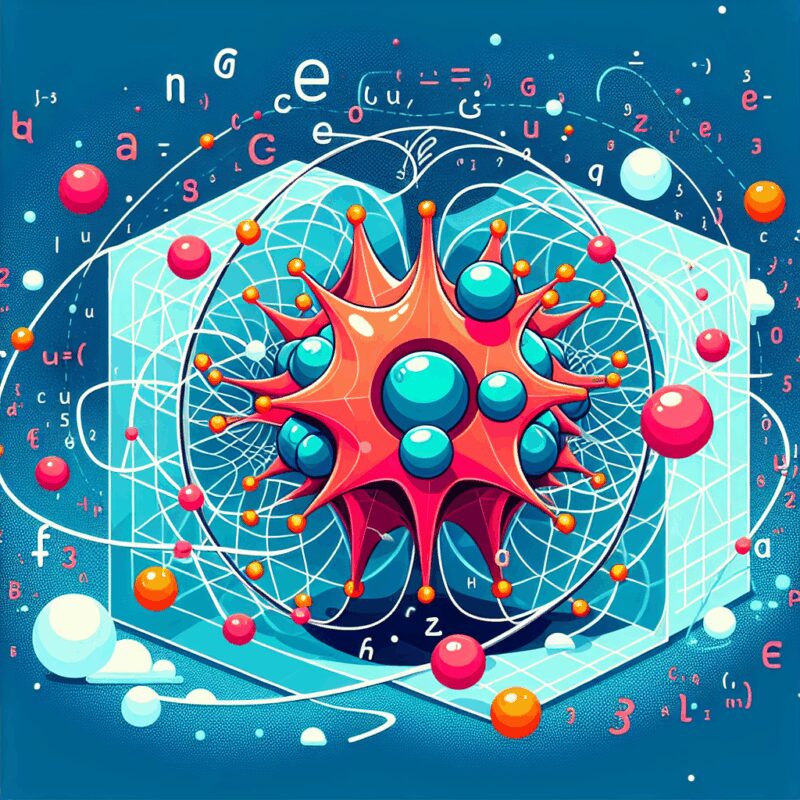
Understanding Spin Foam Quantum Gravity
Spin Foam Quantum Gravity is a complex field of study, but at its core, it’s about understanding the fabric of the universe at the smallest scales. Imagine the universe as a big, stretchy blanket. Now, instead of being smooth, this blanket is made up of countless tiny tiles, each with its own unique color and pattern. These tiles are like the “spin foams” in quantum gravity, where each foam represents a possible configuration of the universe’s building blocks.
The concept of spin foams arises from an attempt to blend quantum mechanics with general relativity. While quantum mechanics deals with the very small, like atoms and subatomic particles, general relativity is all about the very large, like stars and galaxies. Spin Foam Quantum Gravity tries to explain how the universe works when both of these scales are important, such as during the Big Bang.
What Are Vertex Amplitudes?
Vertex amplitudes are a critical component of spin foam models. Picture a vertex as a junction where several roads meet. In the context of spin foams, these vertices are where different quantum states meet and interact. The amplitude, then, is a measure of the probability that a particular interaction or configuration will occur at that vertex.
To put it simply, if the universe’s fabric is like a quilt made of spin foam patches, the vertex amplitude determines how these patches fit together. When scientists calculate these amplitudes, they are trying to figure out the most likely way the universe’s building blocks are arranged. This is crucial for understanding how the universe’s structure emerges from its fundamental quantum properties.
Proton Decay Predictions in Grand Unified TheoriesThe Role of Spin
In the term “spin foam,” the word “spin” refers to the intrinsic angular momentum of particles. In classical physics, spin can be thought of as how a top spins around its axis. However, in quantum mechanics, spin doesn’t involve actual spinning. Instead, it’s a property that particles possess, much like mass or charge.
Spin is vital in quantum gravity because it affects how particles interact with each other. In the spin foam model, different spins correspond to different types of geometric configurations. These configurations help scientists visualize how space itself might be structured at the quantum level, providing a bridge between the abstract math of quantum mechanics and the tangible reality of the physical universe.
Building Blocks of Spin Foams
Spin foams are made up of simple geometric shapes called “simplices.” Imagine building a house using blocks of different sizes and shapes: cubes, pyramids, and so on. In the case of spin foams, these building blocks are four-dimensional, which can be a bit mind-bending to visualize.
Each simplex is like a snapshot of a possible configuration of the universe at a particular moment in time. By stitching these simplices together, scientists create a “history” of the universe’s evolution. This history isn’t a single, definite path but a tapestry of possibilities, each with its own likelihood, represented by the vertex amplitudes.
Proton Decay Predictions in Grand Unified Theories
Application of Renormalization Group Flow in Higher Dimensional TheoriesSignificance in Modern Physics
Spin Foam Quantum Gravity is significant because it provides a potential route to a theory of quantum gravity, a long-sought goal in theoretical physics. This theory aims to reconcile the seemingly incompatible worlds of quantum mechanics and general relativity into a unified framework.
The vertex amplitude structure, in particular, is a step toward understanding how spacetime itself could emerge from quantum processes. If successful, this could lead to breakthroughs in understanding black holes, the Big Bang, and the fundamental nature of reality. It could even offer insights into new technologies and energy sources by revealing how quantum processes shape the universe at the deepest levels.
Challenges and Future Directions
Despite its promise, Spin Foam Quantum Gravity faces several challenges. One of the primary difficulties is the sheer complexity of the mathematics involved. Calculating vertex amplitudes requires advanced techniques and powerful computers, as it involves summing over many possible configurations of the universe’s geometry.
Furthermore, experimental verification remains a significant hurdle. The scales at which quantum gravity effects become significant are so small that they are currently beyond the reach of our most advanced instruments. As a result, much of the work in this field remains theoretical, driven by mathematical insights and indirect evidence.
Nevertheless, researchers continue to explore new methods and technologies that could provide empirical tests of spin foam models. Advances in particle physics, cosmology, and computational power may one day bring these elusive quantum gravity effects within our grasp, paving the way for a deeper understanding of the universe.
Precision Calibration Methods in Top Quark Mass MeasurementConclusion: A Quantum Leap
The study of vertex amplitude structures in Spin Foam Quantum Gravity represents a fascinating frontier in physics. It challenges our understanding of the universe and pushes the boundaries of what we know about the fundamental nature of reality. While the concepts may seem daunting, at their heart lies a simple quest: to understand how the universe’s smallest building blocks come together to create the vast cosmos we see around us.
As research progresses, the insights gained from spin foams could lead to groundbreaking discoveries, reshaping our understanding of the universe and opening up new possibilities for technology and exploration. The journey to uncover these secrets is not just a scientific endeavor but a testament to humanity’s enduring curiosity and desire to comprehend the cosmos.
관련 글: Proton Decay Predictions in Grand Unified Theories
Theory of BEC-BCS Crossover and Superfluidity
[…] Vertex Amplitude Structure in Spin Foam Quantum Gravity […]